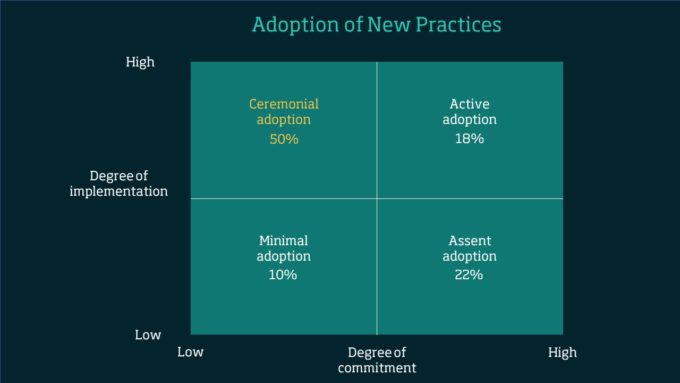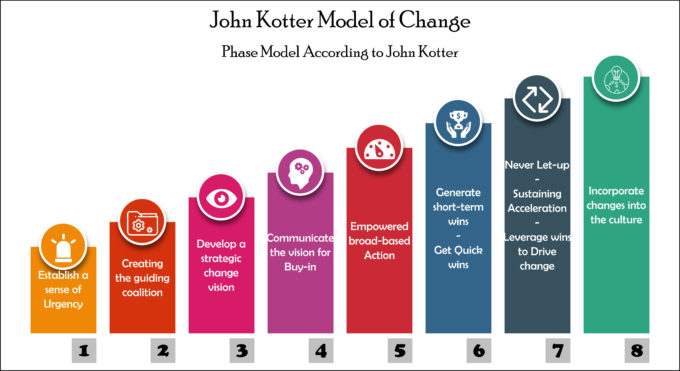4. Communicate to reduce uncertainty
During any change process, there is typically uncertainty, ambiguity or stress, and this has a negative impact on commitment to change. The higher the stressors creating ambiguity or uncertainty and perceived job insecurity, the more likely it is that the initiative will receive minimal support. It is therefore important to communicate with those impacted by the initiative. The effectiveness of communication relies on managers using communication processes and messages that are perceived as understandable and trustworthy. Using concise messages and clearly defined terms as well as precluding the suppression of truth or misstatements of expectations of what the change will bring is part of effective communication.
Keeping in mind that effective communication requires adapting the message for different audiences, it is important to map which stakeholders need to be informed and about what. This will lead to an overall communication action plan that ensures the initiative receives broad share-of-mind. Effective communication also supports and nurtures knowledge about the initiative over time. By communicating the latest updates, individuals are aware of the organization’s efforts and this helps to dispel rumors or misinformation.
How leaders communicate also matters. Showing personal and moral conviction about the initiative, being consistent in choice of words, tone of voice and body language when delivering the message as well as using stories, metaphors and rhetorical questions all have a positive impact on achieving higher levels of commitment. But relying only on leaders to communicate is not enough. Encouraging individuals to share their experiences in a dialogue with leaders is important, as this creates collective ownership and often has a snowball effect through the organizational networks. This may best be accomplished by intense and frequent sharing in meetings or workshops, and by dialogue rather than one-directional reporting. Communication is the key unit of change, so if communication remains a one-off (or rare) event, most change processes are doomed to fail. Communication must take place at regular intervals over time, informing different groups of the progress made.
5. Build momentum early to create a sense of inevitability
The more complexity and uncertainty involved in a strategic initiative, the more important it is for executives to test the waters using a pilot approach. Piloting is a process through which a new practice is first tested and a routine or business model is created for subsequent scaling. The fact that there is continuous planning and feedback throughout the process means that teams start delivering business value from the beginning, thereby creating commitment to change as stakeholders will be able to see the benefits of the initiative.
To help employees understand the demands and requirements associated with the change, it important to plan for resources beyond the first six months and to include training and development explicitly in the implementation plan. Training is often an afterthought and unless budget and time are allocated for it, it may be cut if time becomes tight as the “official” completion date approaches. Furthermore, users of new processes and systems are more likely to grow frustrated if they do not receive training, and this can impede adoption.
Often, the adoption curve is not linear, so achieving the “tipping point” creates a sense
of inevitability that will influence others to adopt the new practice. In sociology, a tippingpoint is “a point in time when a group – or a large number of group members – rapidly and dramatically changes its behavior by widely adopting a previously rare practice.”1 Reaching this tipping point depends on a number of factors – showing benefits through for in instance the pilot, the persuasiveness of change agents, the degree of opposition of the core group and the reduced fear of loss that results from the actual change. The tipping point can, however, be reached faster than expected: Having just a small group of influential change agents and being able to convince some initially active and influential opposers can already tip the scales in favor of the initiative. It is therefore vital to have developed a comprehensive stakeholder map and to understand the networks, as you will then know where to devote your time and energy.








